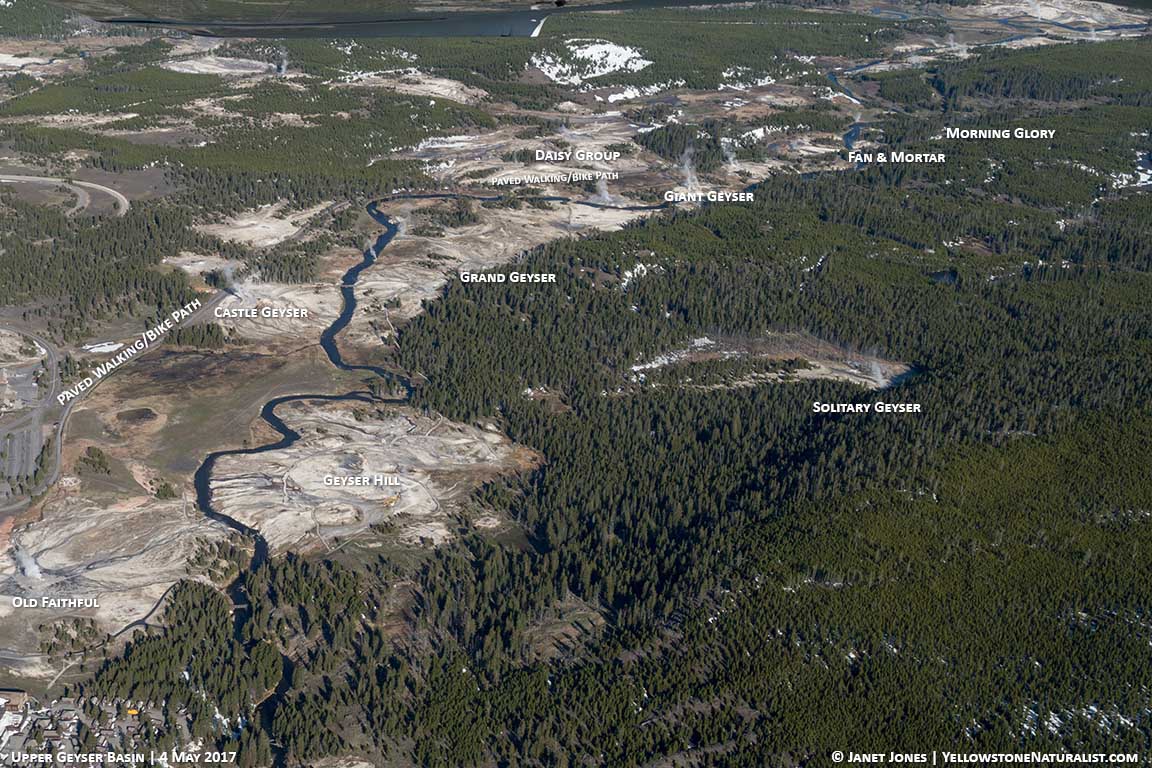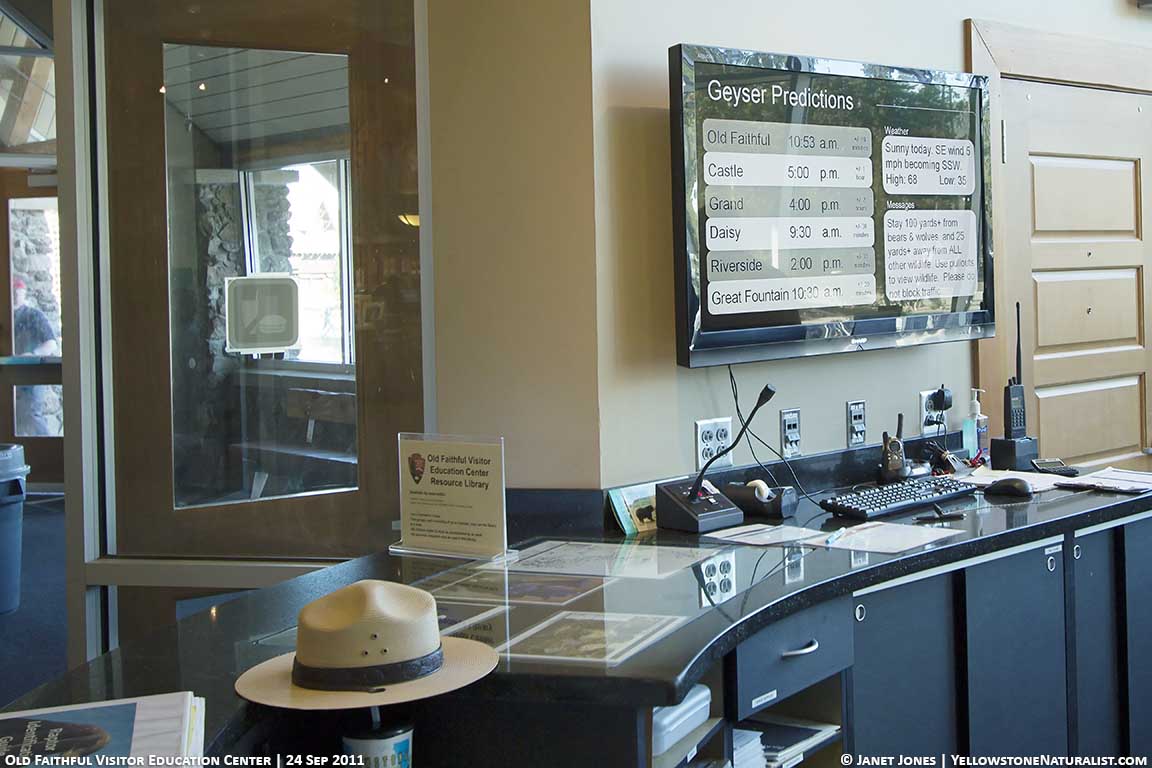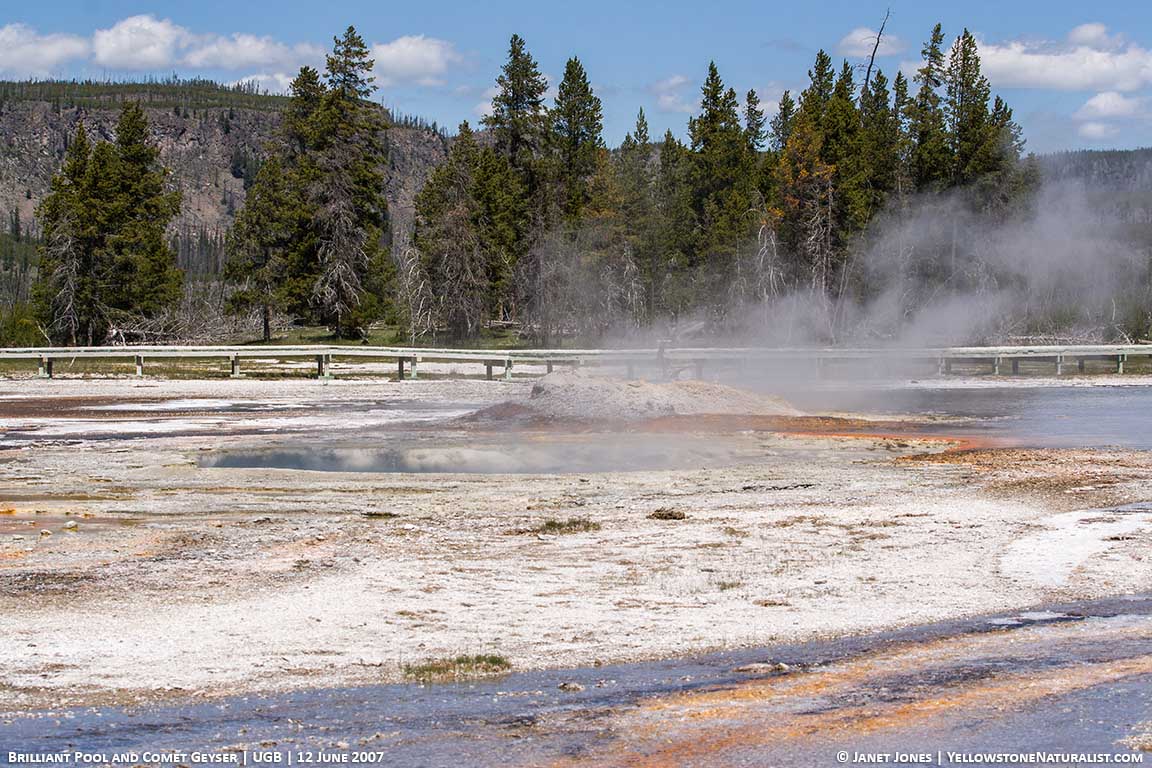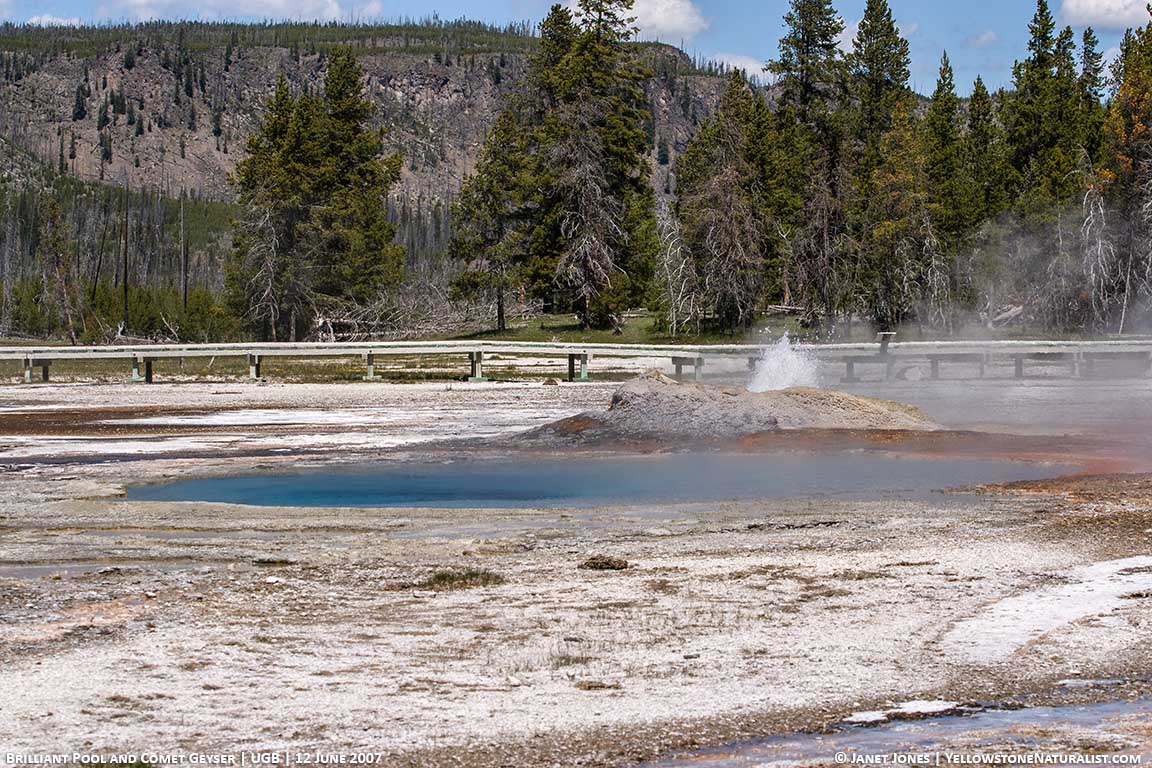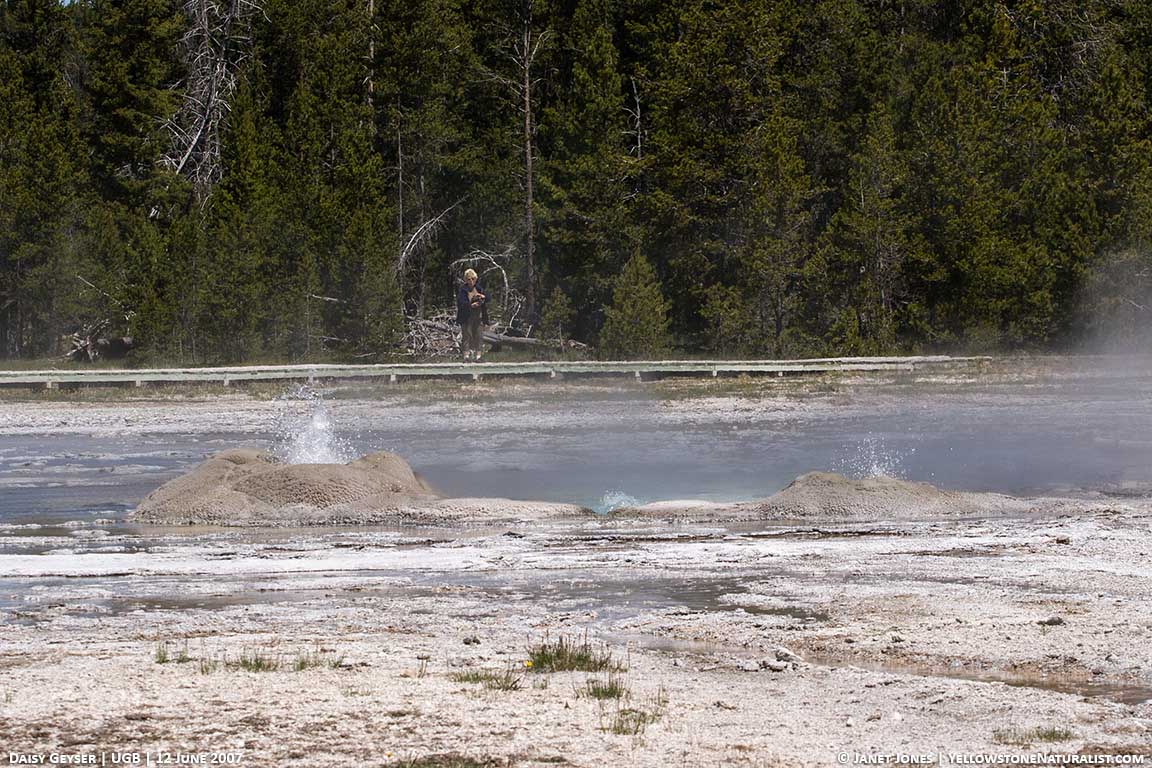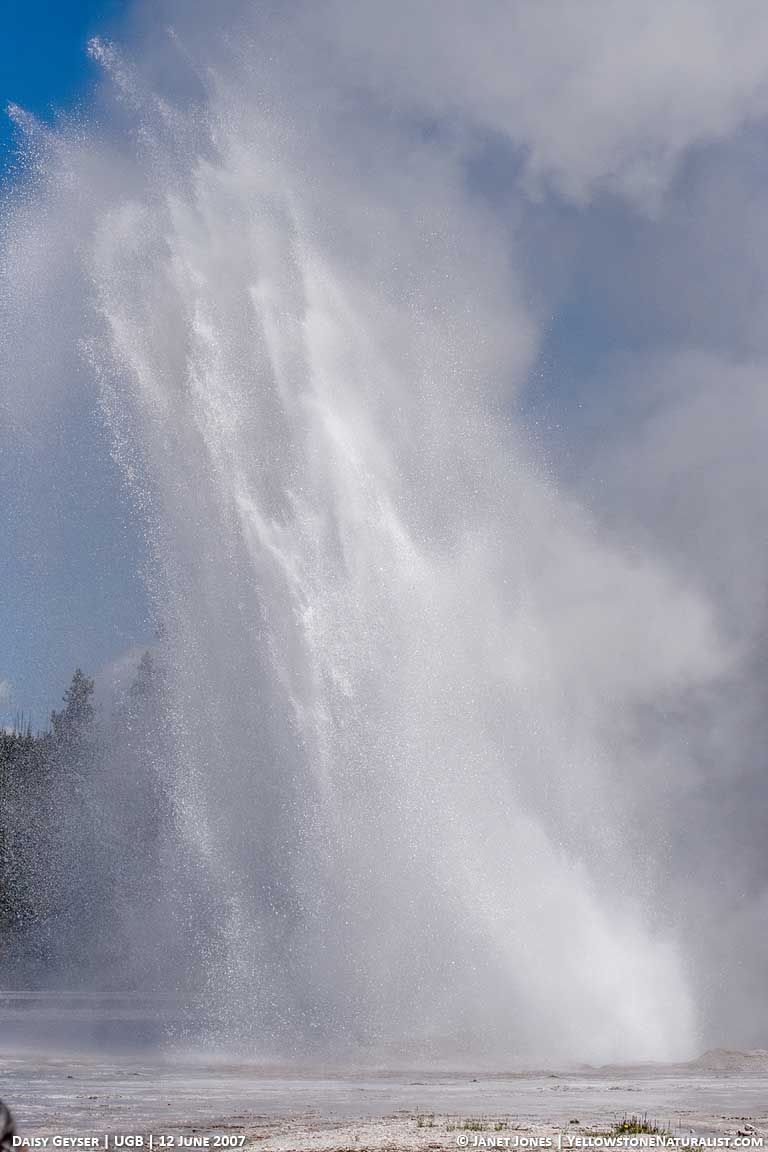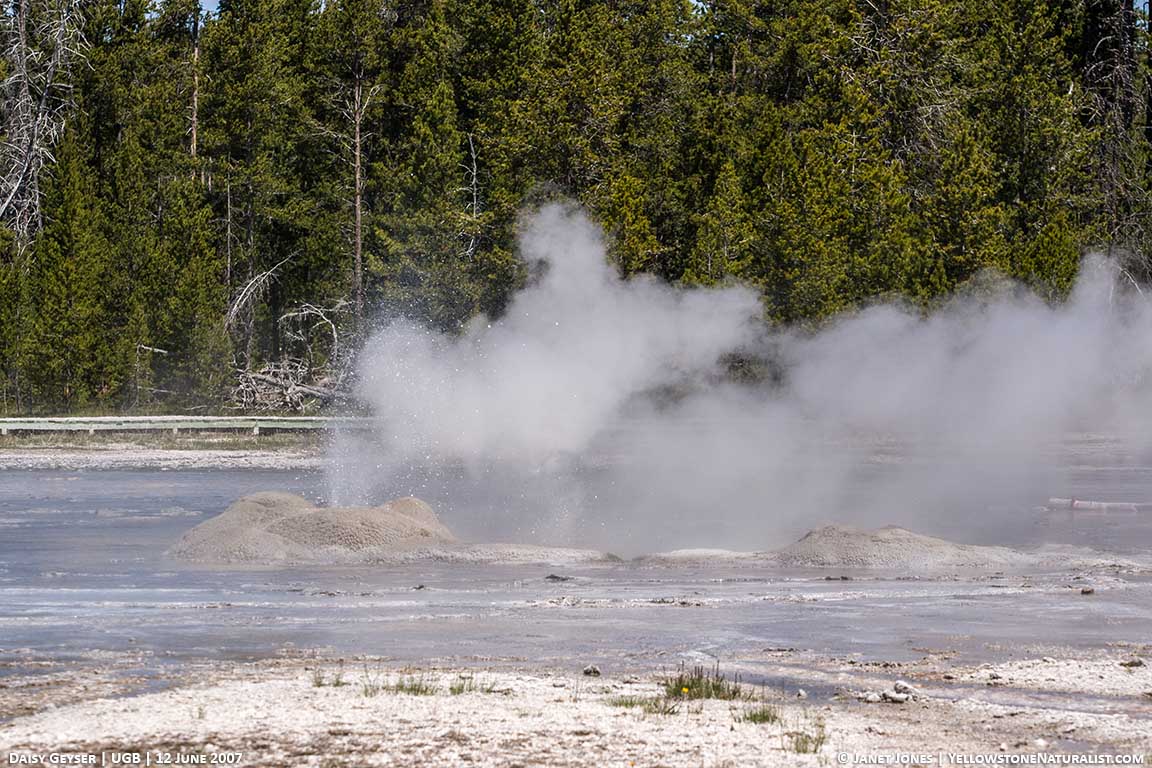Get to know Daisy Geyser
Daisy Geyser was a favorite of my Grandmother. Based on the stories she told me, I think in part because she was around when Park Naturalist, George Marler, was learning more about it in the 1940s and 1950s. In this article, I’ll take you through what to watch for with Daisy Geyser. While it is one of the handful of geysers the park makes predictions for, sometimes they miss an eruption and won’t have a prediction. In this article, I’ll share with you the basics of Daisy Geyser, do you’ll know what to watch for.
WHERE DAISY GEYSER IS LOCATED
Daisy Geyser is located in the Upper Geyser Basin along the paved path that takes you to Morning Glory Pool. To get there, from the Old Faithful village area, head down to Castle Geyser and keep going straight. The path to the Daisy Group of thermal features is on your left. This path makes a loop around the back side of the Daisy Group and rejoins the paved path. You get to choose which side you want to watch the eruption from.
ABOUT
The Park Service only predicts the eruptions of a small handful of geysers, most of which are in the Upper Geyser Basin. Daisy is one of those geysers. Its regularity makes it one that’s easy to catch when you know what to watch for. In recent years the eruptions happen every two to three hours. The window of opportunity for an eruption is around 30 minutes with the prediction in the center of that window. You can find the predictions online with the Park Service or at Geyser Times.
ERUPTIONS & WHAT TO WATCH FOR
Daisy is a lovely geyser that erupts at an angle to a height of 70-75 feet (21-22 meters). The eruptions last about 2.5 to 3.5 minutes. The build up to an eruption starts with a filling of water. While we can’t easily see Daisy’s main vent, we can see Brilliant Pool that shares the same water source as Daisy. Their water levels are the same. During an eruption, as water is drained from the system, Brilliant Pool also drains. So when it’s full, the system’s water has recharged and now it just needs to heat up. The pot is on the stove, so to speak.
On each side of Daisy’s main vent, there are small cones that have built up. These are really the indicator bubblers of Daisy. One will start and play first, often about 15-30 minutes prior to the eruption (if past observations continue to remain true), and the second one will join it anywhere from a few minutes prior to 20 minutes prior.
Once both side vents are splashing, look for splashes coming from between them where Daisy’s main vent is located. Eventually you’ll see an increase and this will build and the eruption.
The eruption holds the height for much of the eruption. Watch for the shift from the water phase to the steam phase and stay until the end. At the end of the eruption, you’ll hear a chugging as if from a steam engine. It’s a cool sound that just happens naturally.
